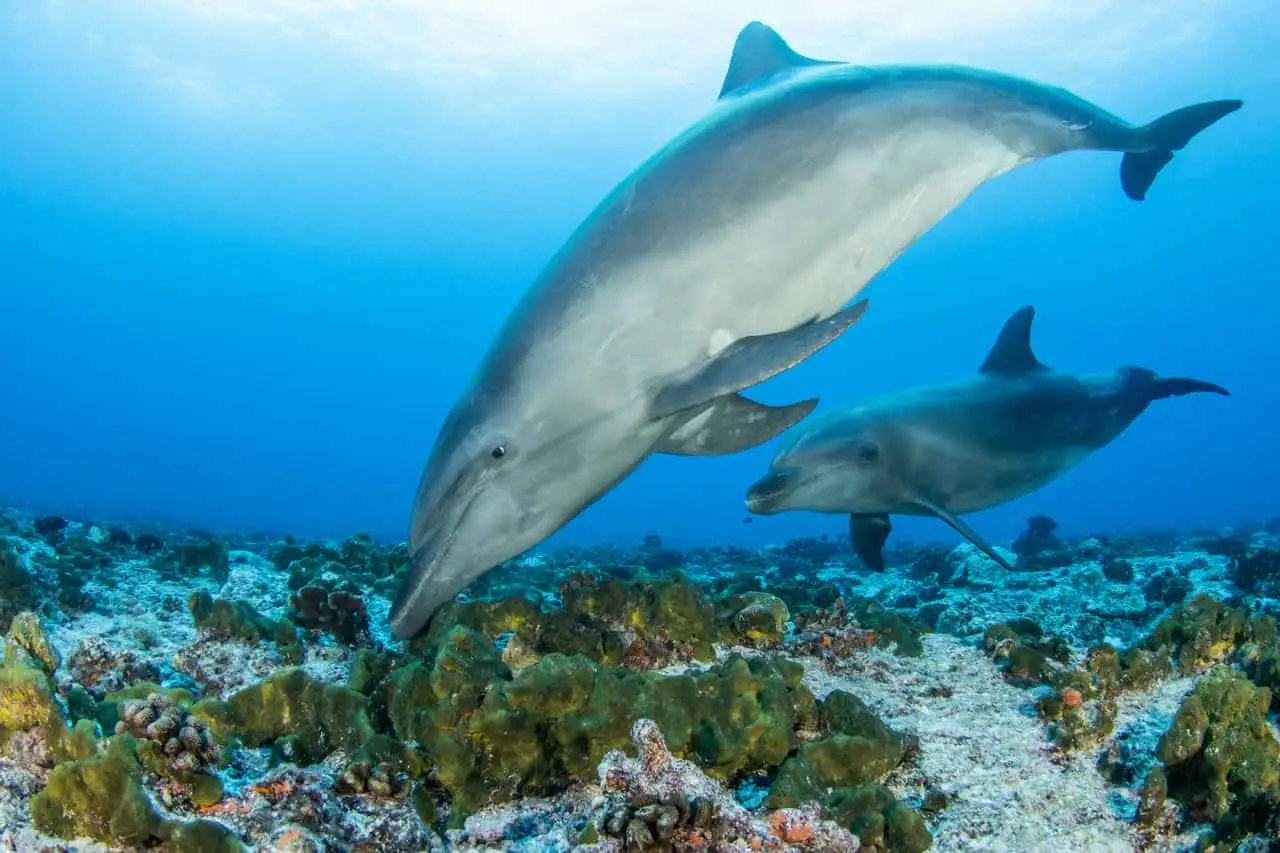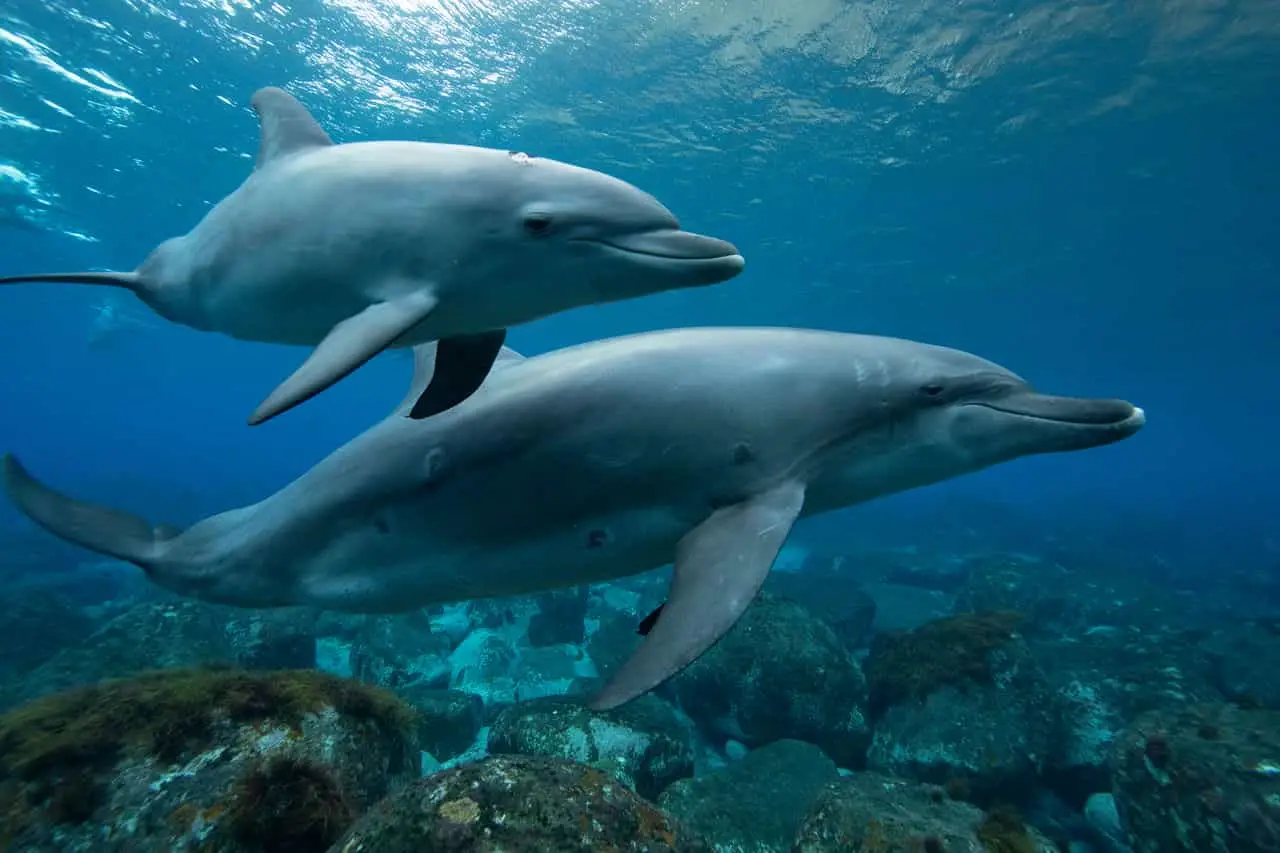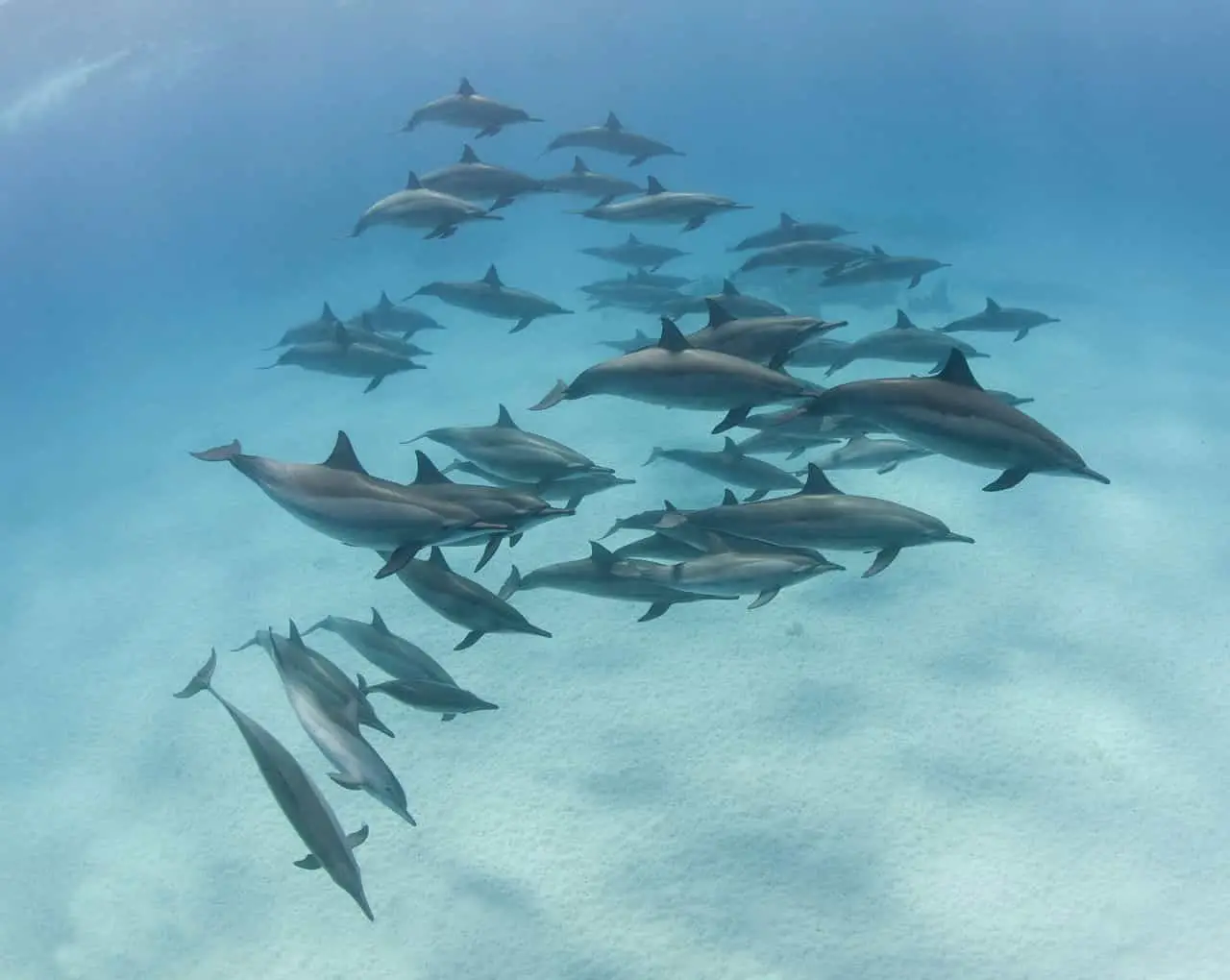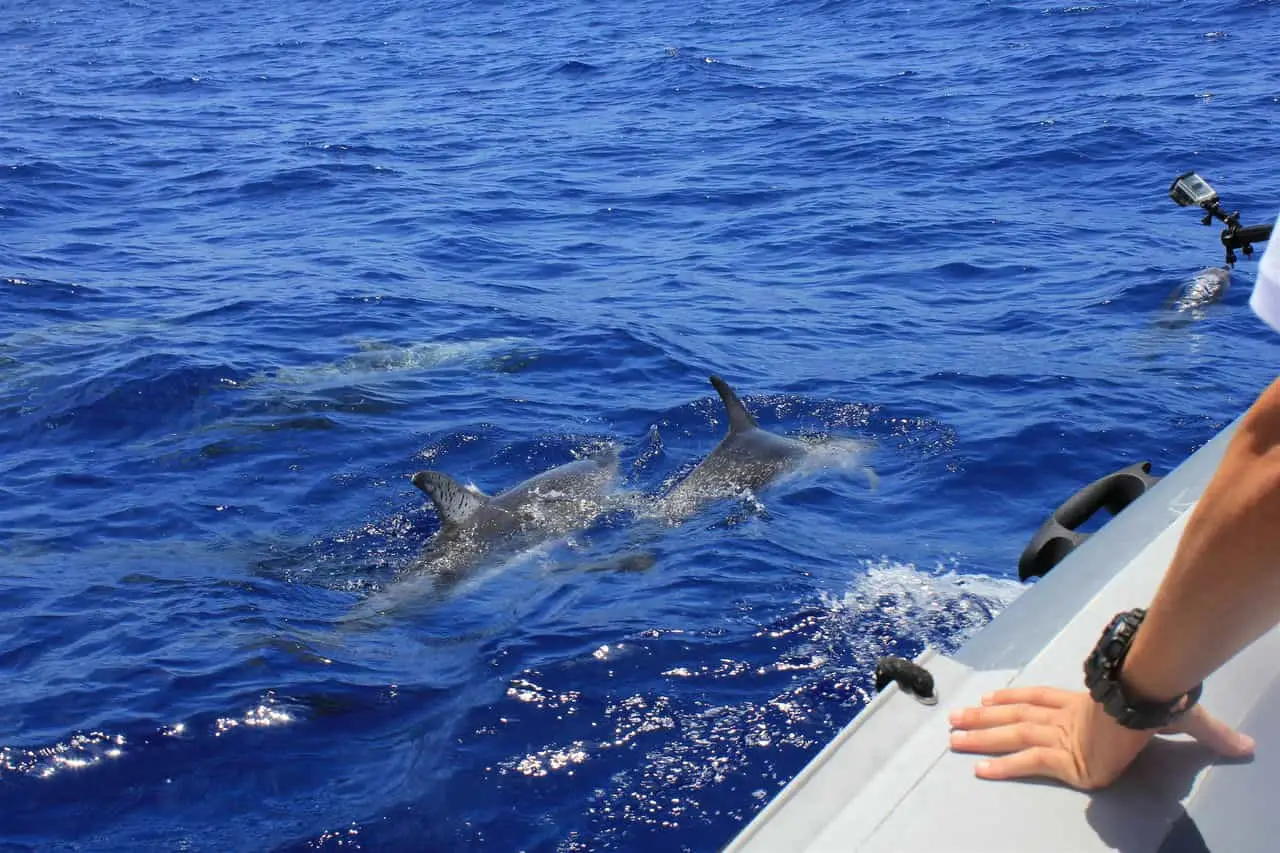Everyone’s always got questions about dolphins — and for good reason. They’re smart, social, and seem to love putting on a show. In Part One of our dolphin Q&A series, we covered where to spot dolphins around Charleston, how high they can jump, and even their favorite low-tide hunting tricks. Now it’s time to dive a little deeper. Let’s answer more of the questions we get on deck during our dolphin tours.
Are dolphins really that smart?

Yes — dolphins are incredibly intelligent. Bottlenose dolphins rank among the smartest animals on Earth. They recognize themselves in mirrors, solve problems, and even use tools. One clever example? Some dolphins in Shark Bay, Australia use marine sponges on their snouts to protect themselves while foraging on the sea floor. That’s next-level thinking for an animal without thumbs.
Charleston’s local dolphins have shown another unique behavior: cooperative hunting. You might see them working together to herd fish into tight groups — kind of like teamwork on a football field, but with flippers instead of cleats.
How do dolphins communicate?

Dolphins don’t speak English (yet), but they have a complex communication system. They use clicks, whistles, and body movements to "talk" to each other. Each dolphin even has its own signature whistle — like a name — that it uses to identify itself.
On calm days in the harbor, you might actually hear their squeaks and whistles if you’re close enough. It’s a reminder that even when they’re silent on the surface, there’s a whole conversation happening underwater.
Do dolphins have families?

Absolutely. Dolphins live in social groups called pods. These pods usually have 5 to 20 individuals, but they can sometimes join up with other pods to form superpods of 100+ dolphins.
In the wild, bottlenose dolphins can live around 40 to 50 years. Some live even longer. Females tend to outlive males, with many living well into their 40s or 50s. Dolphins in protected environments can live a little longer, but most of the dolphins we see in the Charleston area are wild and free.
Do dolphins have predators?

Dolphins don’t have too many enemies, but they do need to watch out for a few things. Large sharks like tiger sharks and bull sharks are their biggest natural predators. Young dolphins and calves are especially vulnerable. That’s why they tend to stay in shallow waters and stick close to their pod.
Humans are actually a bigger threat than sharks. Pollution, fishing nets, and boat strikes can all harm dolphins. That’s why we take safety seriously on our tours and always follow rules to protect these amazing animals.
Can dolphins sleep?
They can — but not like we do. Dolphins sleep with one half of their brain at a time. That way, they can rest while still staying alert enough to breathe and watch for danger. You might spot a dolphin just floating or slowly swimming near the surface. Don’t worry — it’s probably just catching some zzz’s, dolphin-style.
See Them for Yourself on a Charleston Dolphin Tour
There’s nothing quite like seeing dolphins in the wild — especially when they’re cruising alongside the boat or popping up just a few feet away. Whether you’re a first-time visitor or a local, our Charleston harbor tours offer front-row seats to dolphin behavior you won’t catch anywhere else.
Download Our Dolphin Fact Sheet
Would you like a fun visual fact sheet about dolphins? Download it here.
Come Join Us on a Charleston Dolphin Tour and learn more about these lovable creatures!
